Persimmon Pudding with Hard Sauce
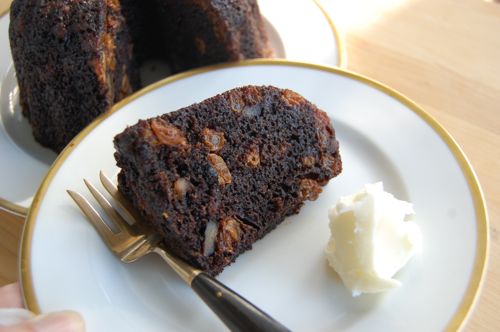
Oh, there’s nothing like a warm slice of persimmon pudding on a crisp fall evening. Looking at this photo, you can see why a lot of folks confuse some puddings with cake. Indeed it has a crumb that’s similar to, say, a dense Devil’s Food cake. An English-style pudding is more sophisticated than that, though, at least to me. Easy as they are to make, they lend an air of elegance that you don’t get from your average mix-and-bake dessert.
Here’s how it goes. First combine your baking soda and water in a small bowl.
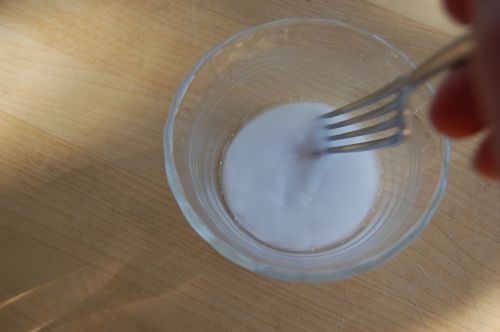
Add that to a larger bowl along with your persimmon pulp, eggs, vanilla and bourbon (or brandy or rum)…
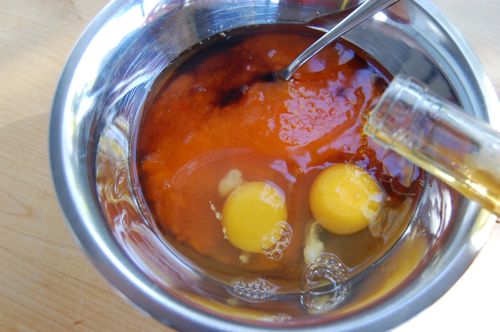
…and blend.
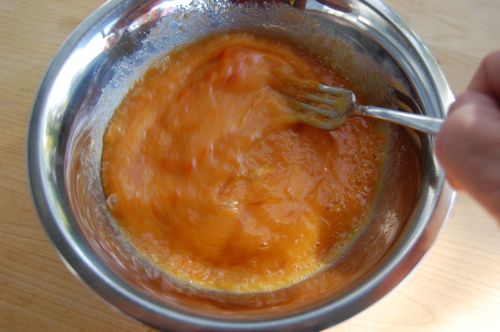
Combine your flour and spices in a bowl and whisk to combine.
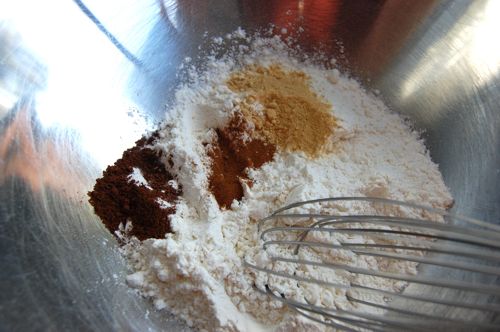
Next put the sugar and butter in the bowl of a mixer…
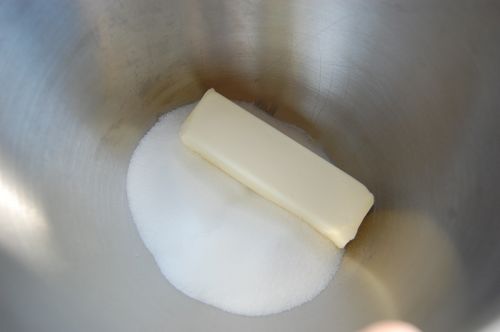
…and beat until combined and light in color. You can also do this by hand, of course. I’m just addicted to modern machinery.
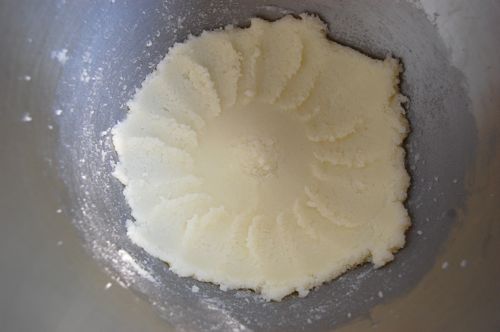
With the machine on low, add half the persimmon mixture, then half the flour mixture and stir to combine. Scrape the sides of the bowl down. The batter might look a little lumpy and strange at this point. Carry on.
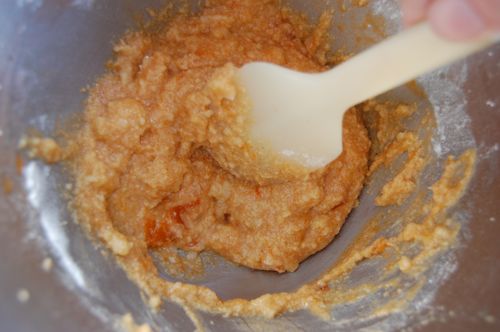
Add the rest of the persimmon mixture followed by the rest of the flour mixture. Continue to stir until the batter becomes smoother and more homogenous. Scrape the bowl and stir about 30 seconds more.

Now add your fruit and walnuts. Yes, I ran out of walnuts and mixed a few pecans in there too. It’s been that kind of day.
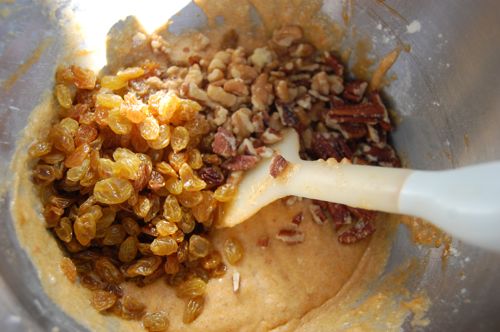
Gently scoop or pour the batter into your VERY well-buttered pudding mold.
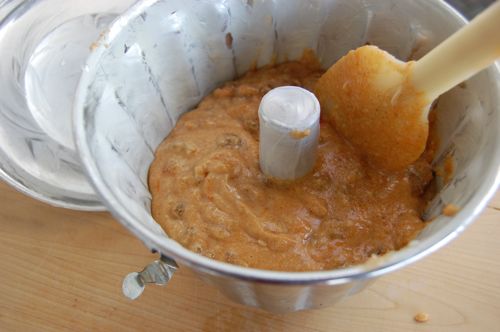
Prepare a pot for the mold. Notice how little water it takes to come halfway up the sides of a pudding mold. This is an 6-quart Dutch oven, and I’ve filled it to about 1/4 of its capacity.
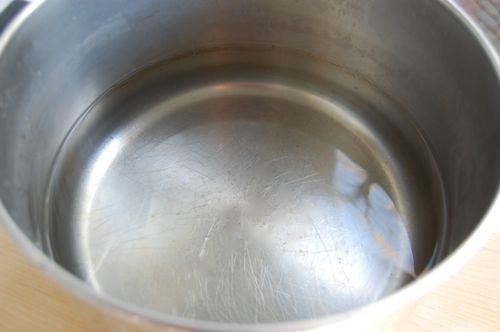
Affix the lid on the pudding mold and insert it into the pot. Put the lid on the pot and set in on the stove top over medium-high heat. Bring the water to a boil, then reduce to medium-low and simmer for two hours. You’ll want to check in every 20 minutes or so to make sure the water isn’t boiling off entirely. If the level is getting low, pour a cup or two of hot water back in.
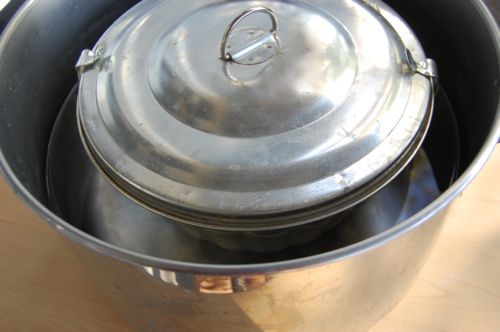
When a sharp knife inserted into the pudding comes out clean, cool the mold on a wire rack for about an hour and a half. It’s cool enough when you can comfortably pick the mold up with your bare hands (don’t try that for at least an hour). Make your hard sauce while you wait.
When you’re ready, pick out a serving platter or plate and place it upside-down over the mold. Then holding both firmly, flip the mold and platter over. If all goes well, you’ll shortly hear a light thwump, indicated your pudding has de-panned itself.
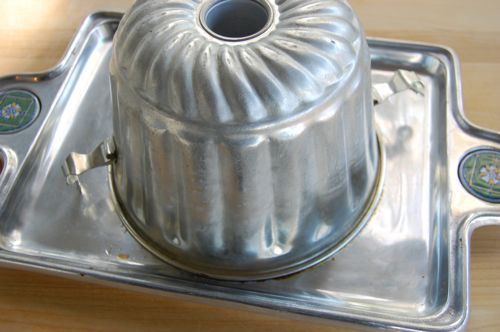
Gently remove the mold. Hopefully, you’ll be looking at something not unlike this:
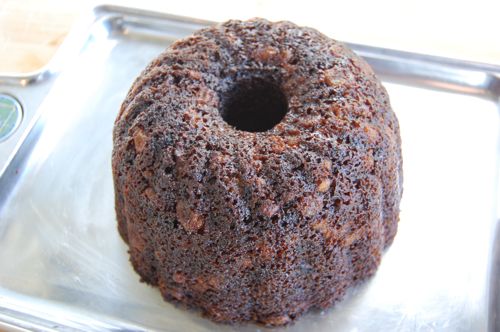
If the pudding doesn’t turn out when you up-end the mold, first try knocking lightly on the sides of the mold with your knuckles. No luck? Try turning it back over and jiggling and jostling the pudding from side to side to loose it. If it still won’t come out, a bamboo skewer inserted down the side can sometimes help loosen a stuck spot. If that still doesn’t do it, picking up the upturned mold and dropping it from a hight of about an inch unsticks the stickiest pudding (so long as it’s warm). If pieces stay stuck to the mold’s interior, gently pry them off and stick them back onto the pudding. Odds are, no one will notice at the table. Those bits will fall off when you cut the pudding, but you can claim you just forgot to get the darn knife sharpened.
Serve each warm piece with a dollop of hard sauce on the side.